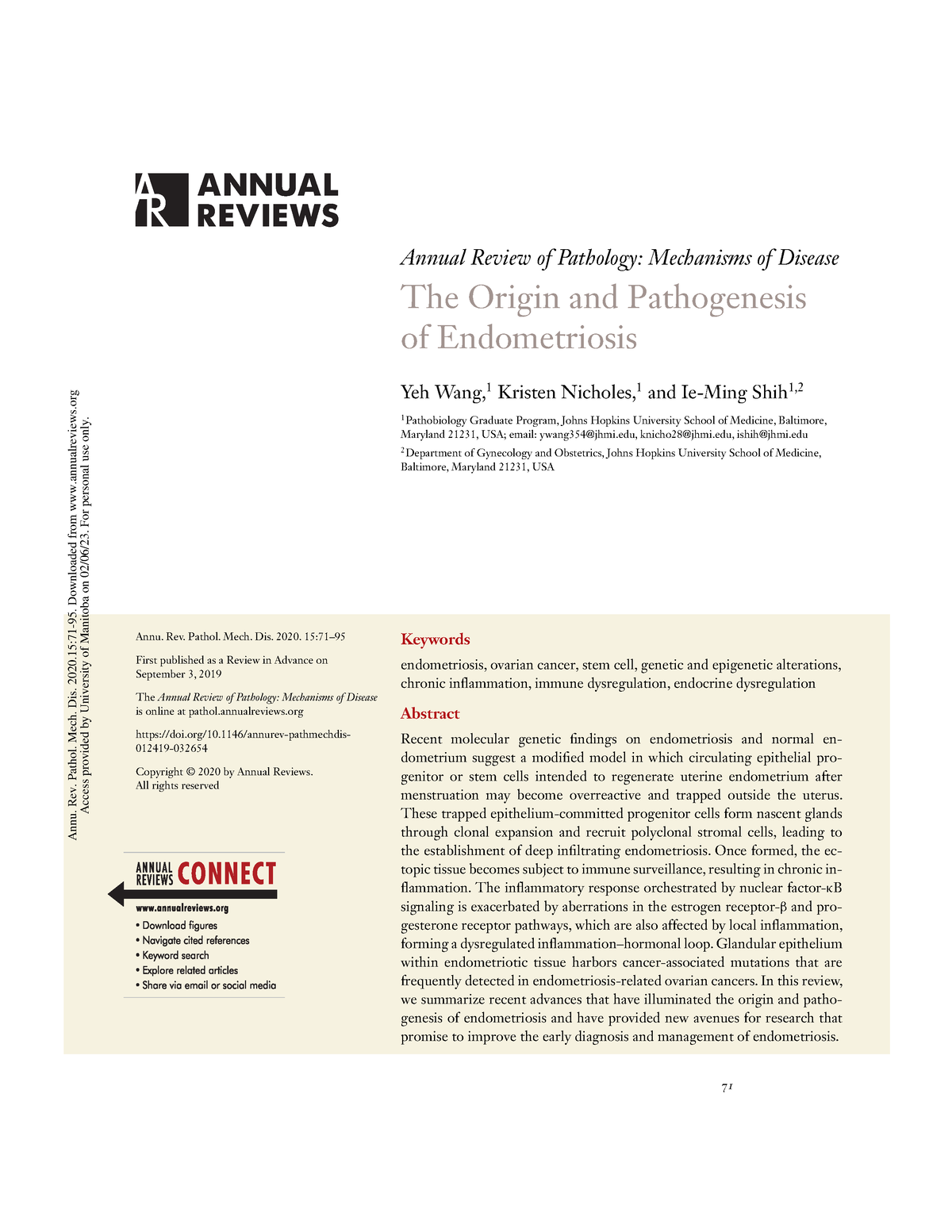子宫肉瘤的分子发病机制及其治疗意义。
IF 34.5
1区 医学
Q1 PATHOLOGY
Annual Review of Pathology-Mechanisms of Disease
Pub Date : 2025-10-14
DOI:10.1146/annurev-pathmechdis-111523-023434
引用次数: 0
摘要
子宫肉瘤是一种罕见的癌症,具有多种临床、组织学和基因组特征。在遗传水平上可分为简单基因组肉瘤和复杂基因组肉瘤,如子宫内膜间质肉瘤(ESS)和子宫平滑肌肉瘤(uLMS)。研究和临床环境中的测序技术显著提高了对这些肿瘤的分子认识。以独特形态和基因组改变为特征的新实体已将具有简单基因组的子宫肉瘤的类别扩大到包括变异型uLMS和纤维肉瘤样子宫肉瘤(FUS)。uLMS的分子分析也揭示了最常见类型的子宫肉瘤可能的治疗靶点,其中预后和临床管理仍然具有挑战性。本文综述了目前低级别ESS、FUS、常规uLMS和变异uLMS的组织学和分子分类,并探讨了在这些子宫肉瘤中观察到的遗传改变对治疗的潜在影响。本文章由计算机程序翻译,如有差异,请以英文原文为准。
Molecular Pathogenesis of Uterine Sarcomas: Mechanisms and Implications for Treatment.
Uterine sarcomas are rare cancers with diverse clinical, histologic, and genomic profiles. At the genetic level, they can be classified into simple and complex genomic sarcomas, exemplified by endometrial stromal sarcoma (ESS) and uterine leiomyosarcoma (uLMS), respectively. Sequencing technologies in research and clinical settings have significantly advanced the molecular understanding of these tumors. New entities characterized by distinctive morphologies and genomic alterations have expanded the category of uterine sarcomas with simple genomes beyond ESS to include variant uLMS and fibrosarcoma-like uterine sarcoma (FUS). Molecular profiling of uLMS has also uncovered possible therapeutic targets in the most common type of uterine sarcoma, where prognostication and clinical management remain challenging. This review discusses the current histologic and molecular classification of low- and high-grade ESS, FUS, and conventional and variant uLMS and explores the potential impact of the genetic alterations observed in these uterine sarcomas on treatment.
求助全文
通过发布文献求助,成功后即可免费获取论文全文。
去求助
来源期刊
CiteScore
62.60
自引率
0.00%
发文量
40
期刊介绍:
The Annual Review of Pathology: Mechanisms of Disease is a scholarly journal that has been published since 2006. Its primary focus is to provide a comprehensive overview of recent advancements in our knowledge of the causes and development of significant human diseases. The journal places particular emphasis on exploring the current and evolving concepts of disease pathogenesis, as well as the molecular genetic and morphological changes associated with various diseases. Additionally, the journal addresses the clinical significance of these findings.
In order to increase accessibility and promote the broad dissemination of research, the current volume of the journal has transitioned from a gated subscription model to an open access format. This change has been made possible through the Annual Reviews' Subscribe to Open program, which allows all articles published in this volume to be freely accessible to readers. As part of this transition, all articles in the journal are published under a Creative Commons Attribution (CC BY) license, which encourages open sharing and use of the research.

 求助内容:
求助内容: 应助结果提醒方式:
应助结果提醒方式:


